Client
Schmersal - The DNA of Safety
tec.nicum is an academic body that spearheads excellence in machine and industrial safety through comprehensive training programs and seminars. It is an independent service division within the Schmersal Group.
The experts at tec.nicum offer a capable, product- and manufacturer-neutral consulting experience. Its goal is to educate and inform on all the latest statutory guidelines and support organizations in designing their machines and workplaces to be norm compliant.
tec.nicum offers additional complementary services including workforce training, design and engineering consultancy, and the integration of safety solutions. The academy delivers unique value thanks to the objectivity of its manufacturer- and product-neutral consulting services.
- Research
- UX
- UI
- Branding
- Usability Testing
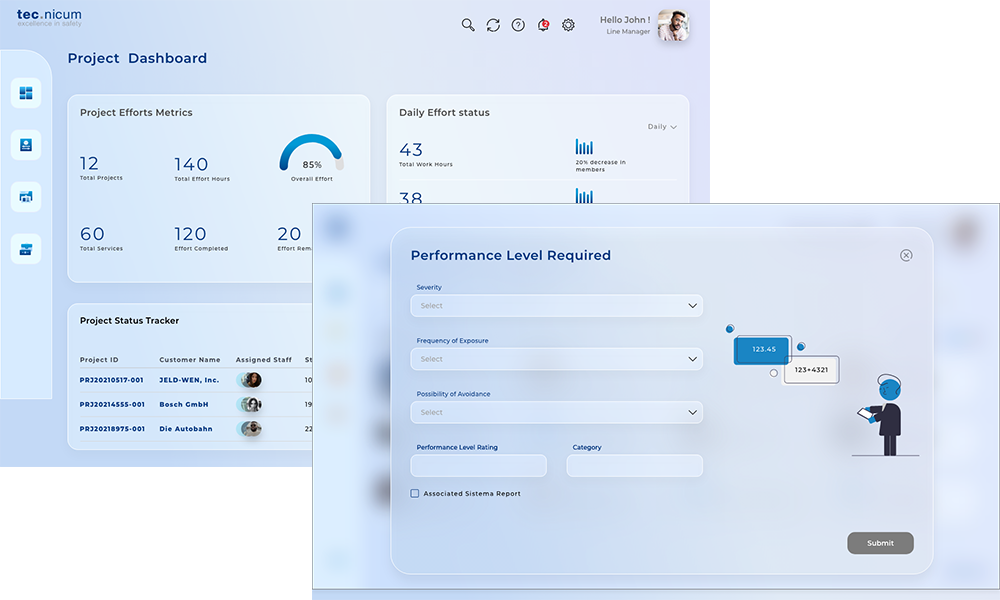
Problem Statement
Kurt Andreas—part of Schmersal India—started a manufacturing plant in India consisting of seven manufacturing facilities. Trianz Digital Studio was enlisted to offer advice and oversight in pursuit of the following business objectives:
- Eliminating Manual Processes and Transitioning to Digital Workflows
- Task Automation to Improve Operational Efficiency
- Greater Scalability Across Locations, Languages, Guidelines, and Specifications
- Protecting Intellectual Property and Data
- Higher Extensibility, Greater Potential
- Cultivating a Market Differentiator
Project Solution
- We bring a strong understanding of the Application from our previous assessment and how it must enable and connect specific users across the supply chain to deliver value to the business
- We apply a Design-led engineering approach that optimizes the User Experience to onboard their customers into their portal
- The end-state architecture will be a Logical Architecture, with components being deployed as microservices to enable loose coupling and independent deployments
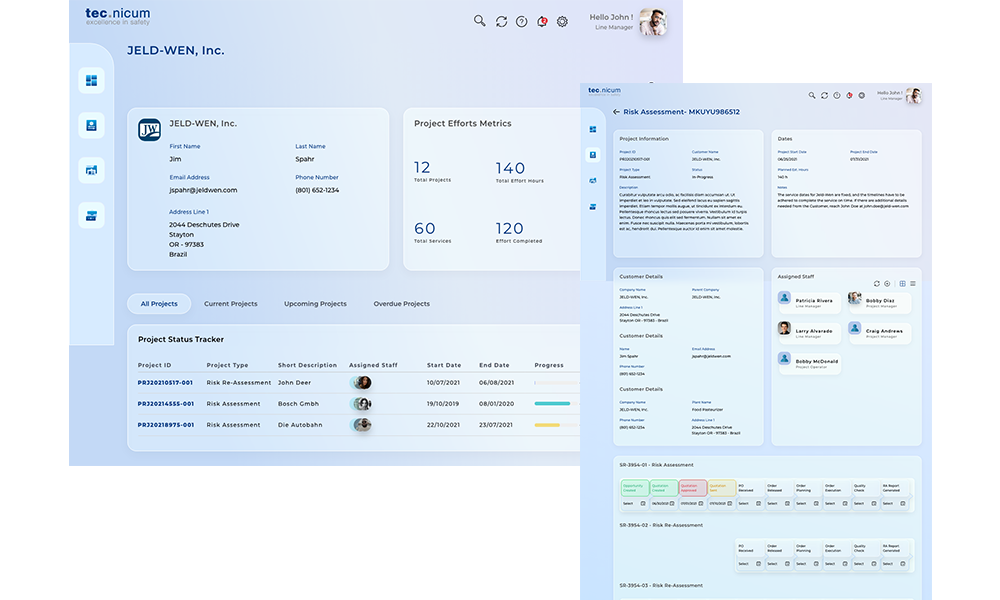
Our End-to-End Process
Trianz Digital Studio worked with the client across four phases. This phased approach ensures that our team has all the information it needs to provide targeted support to the client at each stage.
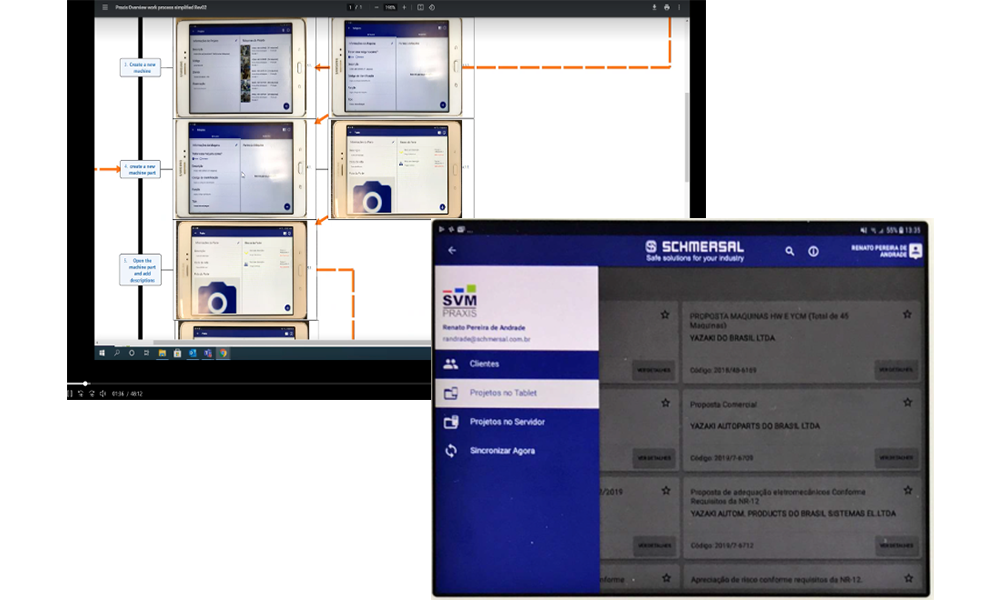
Learning
The learn phase started with a kick-off workshop:
-
An introduction to Blue.Print products.
-
Exploration and analysis of User Processes to obtain insights.
-
Module Stages incorporated within a digital workflow.
-
Defining the aspects of user behavior and its relation to hierarchy.
-
By the end, the goal is to understand the inner workings of current manual workflows.
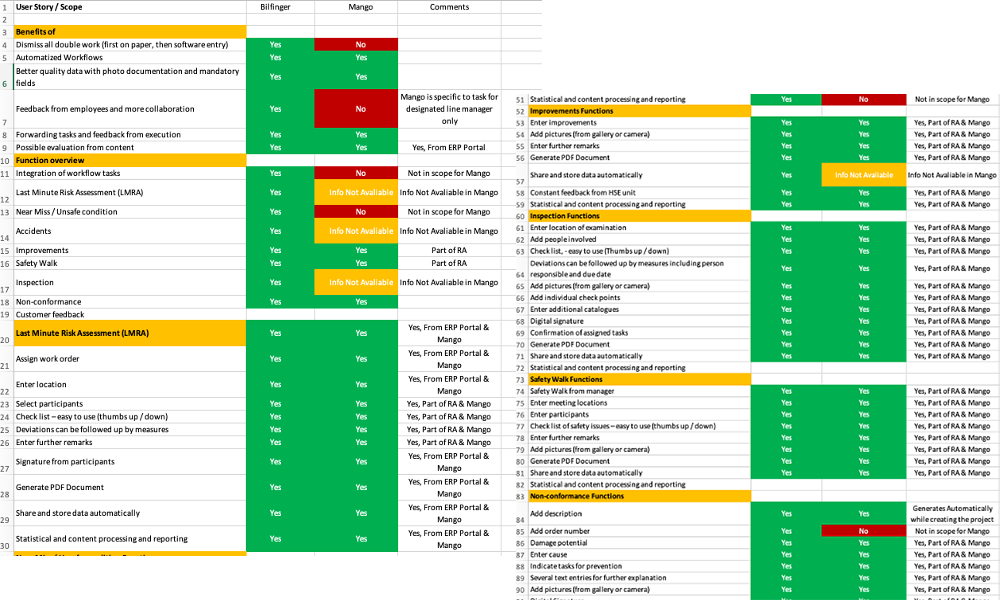
Analysis
This was followed by analysis of existing user research interview recordings and reports. This enabled greater understanding of customer wants and needs in relation to the services offered. Following this, stakeholder interviews helped Digital Studio to better understand internal business priorities.
By combining the user and stakeholder research, our team was able to synthesize research insights that relate back to the core business objectives.

Affinity Mapping
Affinity Workflow Mapping workshops further enhanced these insights by uncovering hidden patterns, and grouping the relationships between processes, workflows, machines, and customer needs. Here is a deeper look at what was identified:
-
User Roles - Global Admin, Regional Admin, Project Manager, Line Manager, Project Operator, Administrator, and Sales Clerk are among some of the users.
-
Role-Based and Hierarchical Data Access - Each user has several Hierarchy Levels, each with its own set of regulations on how they can access the encrypted data, as well as hierarchical Approvals to seek Permission.
-
Approvals Management - Superior approval is required at each stage of the workflow.
-
Timeline Management - Each workflow has an expected timeline to keep track of the different stages of the project.
-
Digital Documentation - Documents can be created using all the information provided by experts and managers.

Additional Learnings
-
Workflow and Legacy App Demos – This improved understanding of existing application workflows, and how they use products on a day-to-day basis. For example, the client used SAP Applications to manage workflow assignments.
-
Praxis Legacy App – Praxis is a legacy application used for client management. It tracks customer, project-related, and machine information to enable all internal activities.
-
Defining Archetypes – This defines the logical starting point for groups of people that share common behaviors, interests, and beliefs.
-
Competitive Analysis – This involves comparative analysis of existing products on the market, including their benefits and drawbacks, compared to what the client is developing. This allowed Digital Studio to identify gaps in the approach, and to drive further enhancements to workflows.
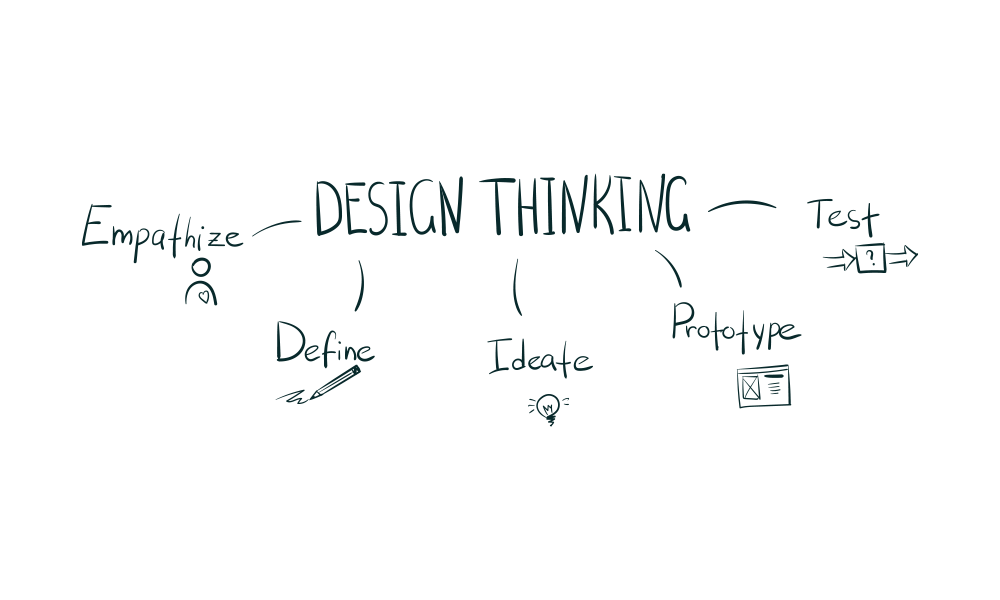
Ideation
To start, the archetypes were identified. This helped us to identify the requirements, expectations, and hierarchical structure of individual customer groups.
Next, an Ideation Workshop took place. This is a dedicated brainstorming session to generate a broad range of ideas—normal and unconventional—on a topic, without any judgement or evaluation. Digital Studio worked closely with stakeholders and staff during the workshop.

Analysis of IA
Then, the existing intranet information architecture (IA) was analyzed using card-sorting exercises. This is an important aspect of enhancing digital workplace navigation, design, and data arrangement. The IA was created with different user hierarchy levels in mind.
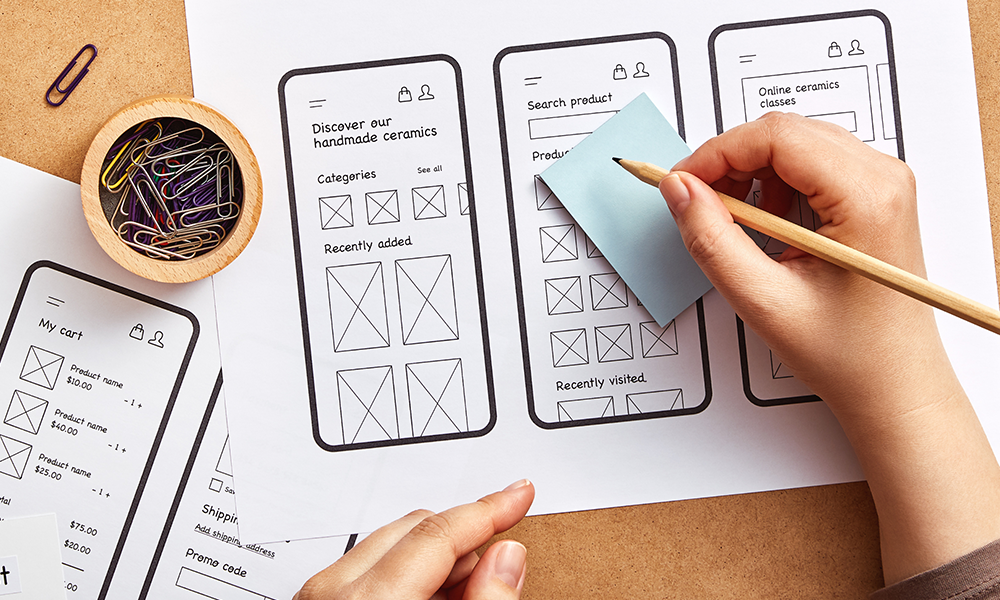
Concept Design Testing
To finish, concept design testing was used to scrutinize raw ideas that come out of the ideation phase for business suitability. This led to a range of hypotheses, such as:
Hypothesis - “If this product targets managers, would a map view in the application be useful?” Prediction – “A map view would enable managers to locate their projects by orienting themselves based on customer site locations.”
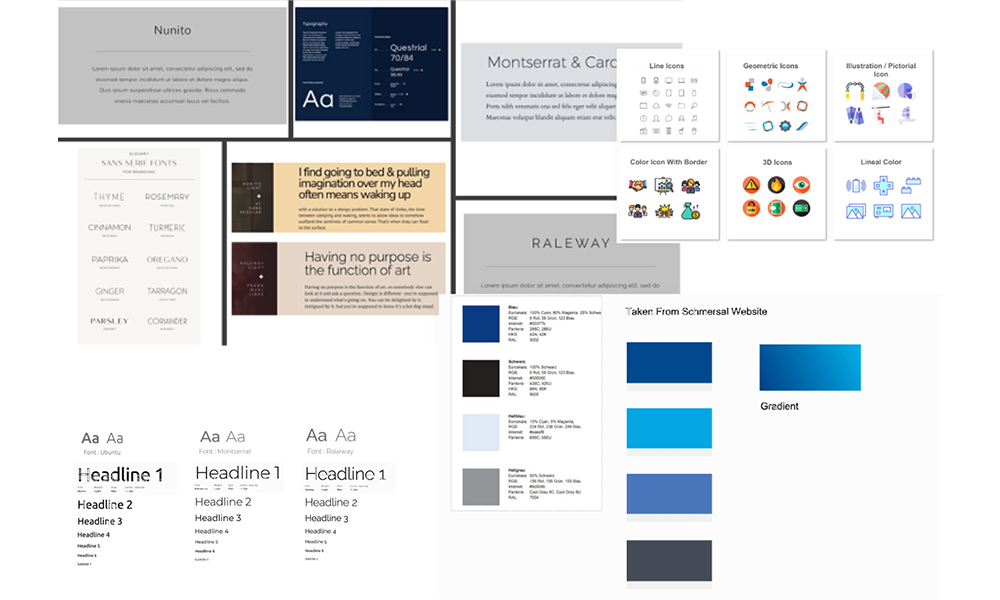
Mood Boards
The final step was creating a mood board, so that visualized versions of concepts could be easily accessed and reviewed by all parties.
Other ideas from the ideation phase include:
-
Landing Dashboard and Project Management – This idea would enable real-time viewing of ongoing and completed metrics for users. It also shows staff details, as well as expected time frames and project status.
-
Offer Processing – This idea would enable users to create, modify, and process offers via a management module.
-
Execution and Intuitive Activities – The project dashboard should become part of the employees’ daily routine, and assist them in starting the day, identifying duties, and adhering to deadlines.
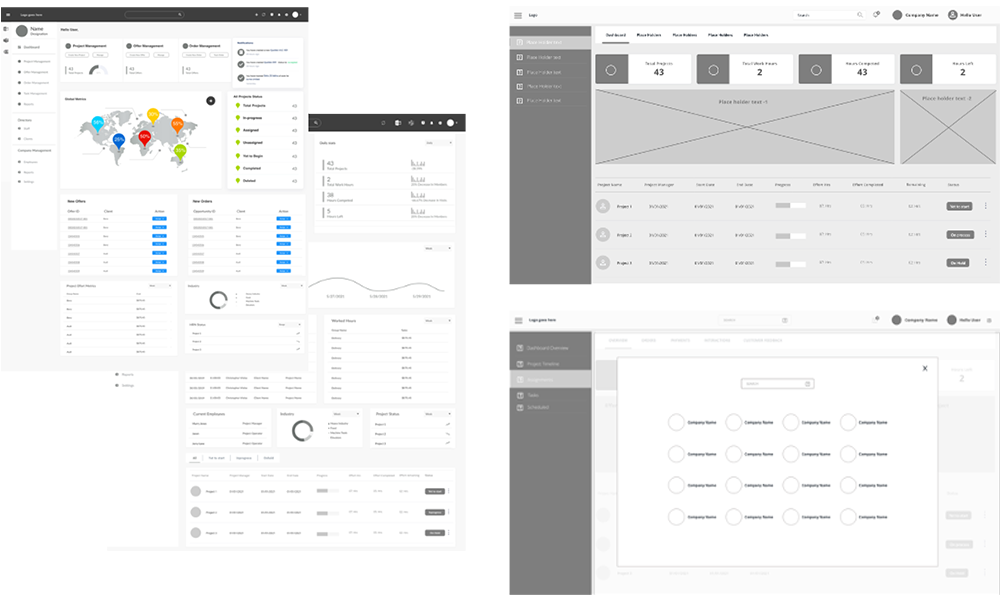
Wireframes
The first part of the design phase is the creation of initial wireframes. A wireframe is an initial iteration of a design structure, often used to simplify initial user interface testing.
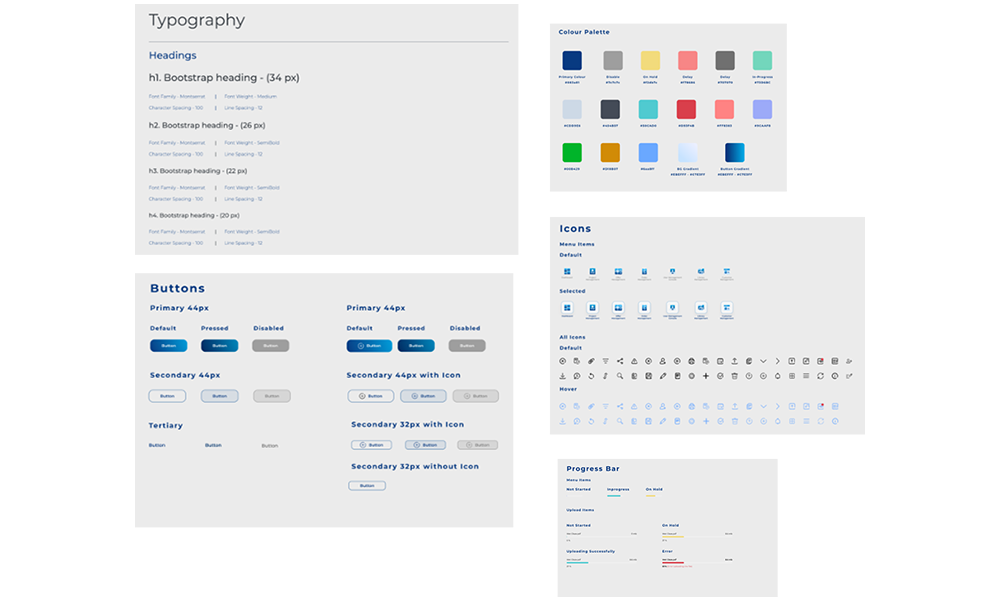
Visual Direction
Next, the visual direction is defined. We explored multiple visual directions to ensure that Digital Hub would have the fresh, on-brand look and feel the company is looking for.
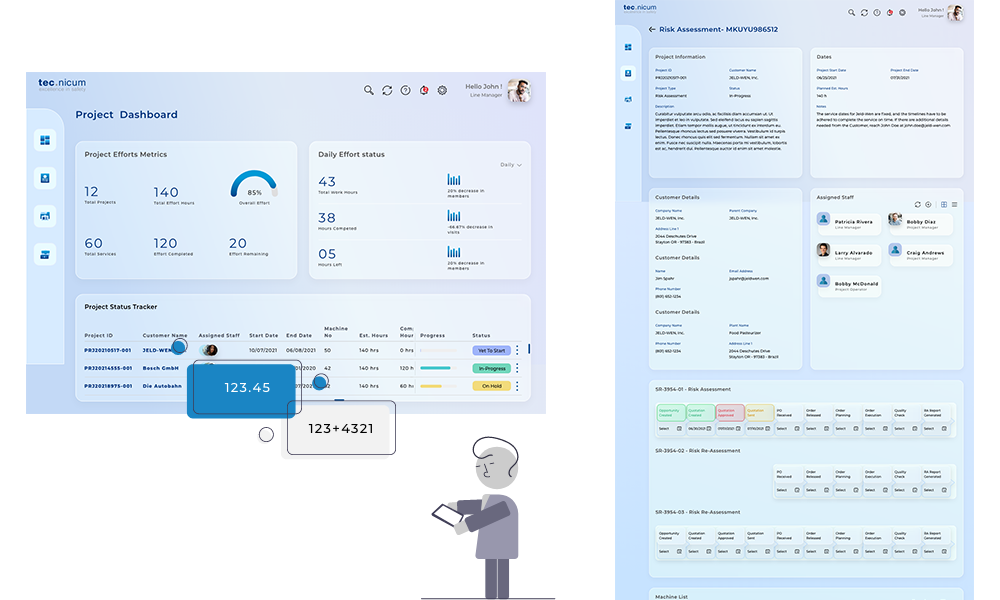
High-Fidelity Mockups
The team creates a high-fidelity or higher-resolution version of the design flow. This is presented to relevant stakeholders to gather opinions and make further improvements.
This entire design process is defined according to Agile methodologies. Agile enables bigger objectives to be broken into smaller bitesize tasks. Then, these smaller tasks are distributed among the design team, leading to deeper collaboration and iterative improvements in each “agile design sprint.”
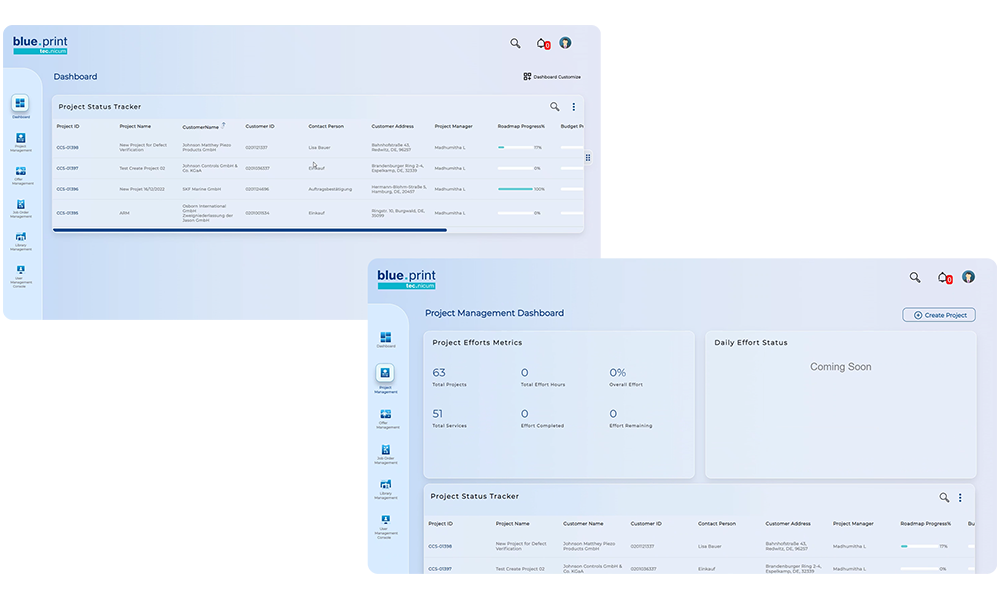
Development
The final phase started with a kick-off workshop to introduce all parties, and to establish next steps along with timescales.
Both design and development teams collaborated closely during this phase. At the end of each development sprint, the team would demo its work and reconvene to determine next steps. User Acceptance Testing (UAT) also took place at the end of each development sprint, providing useful feedback from the users to guide development.
The design team offered support with visual quality assurance (QA), ensuring development outputs are aligned with the approved design.
The Business Impact
Schmersal managed to achieve all the initial business objectives as defined in the plan, along with some unexpected extras. As a result, it could accommodate more customers in more locations and languages. It now has the clarity and operational agility to work across what was a diverse and dizzying set of regulations, laws, and statutory guidelines in the industrial sector.
Experience Design Case Studies
The case studies below are a window into a typical Enterprise Level project experience at Digital Studio. Take a look behind the scenes at how our team delivers meaningful digital experience transformations for top brands worldwide.
View Our WorkTogether, we can do great things.
Our team is ready and waiting to hear how we can help you transform your digital experience and create a uniquely “You” solution that modernizes your digital brand.


